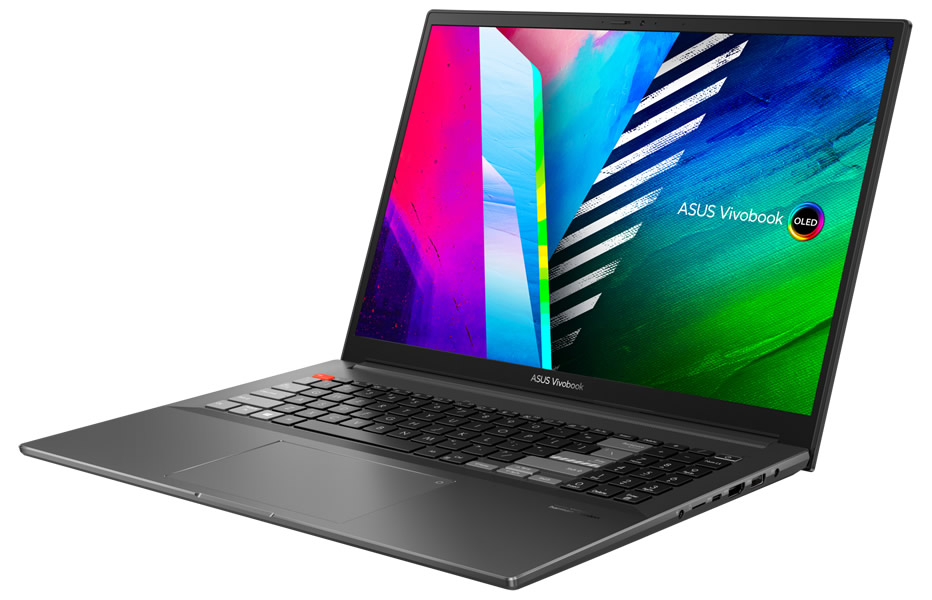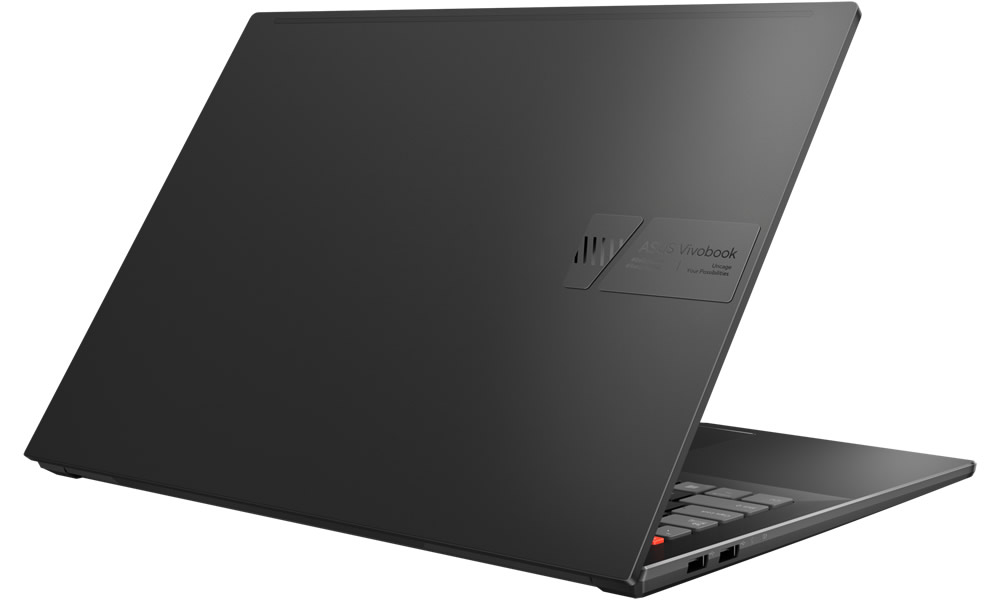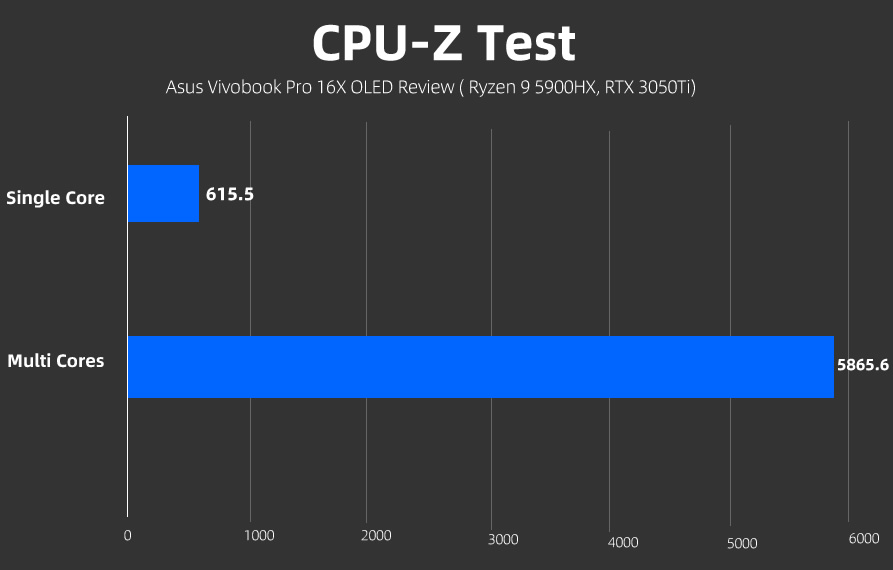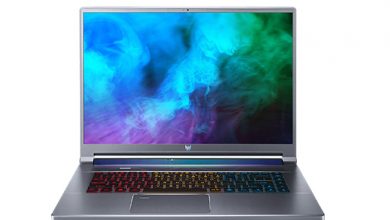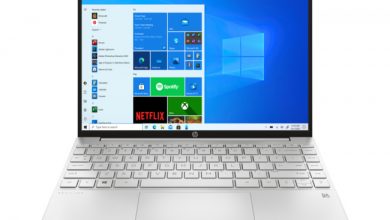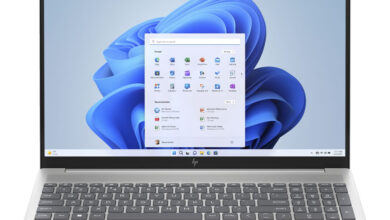When purchasing a new laptop, a user is likely to prefer an all-around laptop that can handle all the tasks they want to accomplish, including office work, minor tasks, and gaming. Today, the laptop we are reviewing can satisfy the fundamental needs of that specific user.
Today, we will review the new ASUS Vivobook Pro 16X OLED, which is a hybrid of a gaming laptop and a business laptop. The laptop is powered by the latest AMD Ryzen 9 5900HX CPU and RTX 3050 Ti GPU, ensuring that its gaming performance can easily handle the requirements of most modern games. At the same time, its thin, light, and high-end design is in line with the caliber of a business laptop.
The model we’re reviewing in this article is the top-end version (Ryzen 5900HX + RTX 3050 Ti), but its pricing is currently unknown. There are several other CPUs with lower specifications in the AMD Ryzen 5000 series, so you can opt for them if you’re on a budget. Additionally, if you prefer Intel CPUs over AMD, luckily, you can still choose Intel (latest 11th gen) CPUs.
Specifications
| Screen | 16.0-inch, WQUXGA (3840 x 2400) 16:10 aspect ratio, OLED, 0.2ms response time, 550nits Peak Brightness, 100% DCI-P3 color gamut, 1,000,000:1, HDR Support, 1.07B display colors, PANTONE Validated, Glossy display, 70% less harmful blue light, Screen-to-body ratio: 86 % |
| Processor | AMD Ryzen 9 5900HX Processor 3.3GHz (16M Cache, up to 4.6GHz, 8 cores) |
| Wireless Connection | Wi-Fi 6(802.11ax) and Bluetooth 5.0 (Dual-band) 2×2 |
| Graphics card | AMD Radeon Graphics, NVIDIA RTX 3050 Ti Laptop GPU 4GB GDDR5, Maximum 1035MHz |
| Memory | Dual Channel 32GB DDR4 (2x 16GB RAM Sticks) on board, Memory Max Up to: 32GB |
| Storage | 1TB M.2 NVMe™ PCIe® 3.0 SSD |
| Ports | 1x USB 3.2 Gen 1 Type-A 2x USB 2.0 Type-A 1x USB 3.2 Gen 1 Type-C 1x HDMI 1.4 1x 3.5mm Headphone/Microphone Jack 1x MicroSD Card Reader Slot |
| Battery | 96Wh, 6-cell Li-Ion battery |
| OS | Windows 10 Home, Free Upgrade to Windows 11 (when available) |
| Weight | 1.95 kg (4.30 lbs) |
ASUS Vivobook Pro 16X OLED: Design, Appearance & Portability
We’ve already mentioned that the new Vivobook Pro 16X OLED comes with a slim body design that allows the laptop to cover the business-class laptop segment. The total dimensions of this notebook are approximately 360.5 × 259 × 17.9 mm, and it weighs approximately 1.87 kg. With a thickness of only 17.9 mm, this laptop also meets the criteria for good portability.
When it comes to workmanship and design, the Vivobook Pro 16X OLED comes with a metal body, which is not only sturdy and pressure-resistant but also embodies the hallmarks of technology and fashion. The matte texture of the entire body also gives visual satisfaction and a more delicate feel. On the right side of the display case, we see the customized ASUS Vivobook logo, which is further integrated with the metal top cover.
The overall design of the ASUS Vivobook Pro 16X OLED represents a beautiful industrial design and craftsmanship.
ASUS Vivobook Pro 16X OLED: Display
The new Asus laptop comes with a 16-inch 4K+ (3840 x 2400) resolution Samsung E4 OLED display. The bezels on both sides of the display are very slim.

The display provides a more immersive, large-screen visual experience for office tasks such as web research or document creation. It also features highlights such as HDR support, 550 nits peak brightness, and a 100,000:1 contrast ratio.
The display has a 100% DCI-P3 color gamut and a 133% sRGB color gamut, and is also Pantone Color certified. The overall quality is excellent and suitable for designers. For high-end gaming, we recommend that players choose an IPS display with a 144Hz refresh rate for a smoother gaming experience.
To properly test the screen quality, we used the Spyder5 Elite Color Calibrator from X-Rite to provide accurate color measurements. After testing, we found that the display has a 100% sRGB, 99% DCI-P3, 99% Adobe RGB, and 97% NTSC color gamut. In the Tone Response test, the measured curve was almost identical to the Luminance 2.2 curve. In the Color Accuracy test, the maximum Delta value was 2.31, and the average value was 0.81. The overall test results exceeded some professional monitors. Therefore, we can easily say that the ASUS Vivobook Pro 16X OLED features a perfect screen.
The OLED screen has a longer blue wave peak than traditional LCD screens, which reduces 70% of harmful short-wave blue light for hardware-grade blue light protection. The display has also been certified by several authoritative organizations, including SGS and TÜV Rheinland.
When it comes to the lifespan of the OLED screen, users don’t need to worry. The Vivobook Pro 16X OLED display is made with the latest Samsung E4 luminescent material, which not only extends the lifespan of the screen but also improves brightness and delays the attenuation of pixel brightness.
On the top bezel of the display, a webcam is placed that can record videos in 720p (HD) resolution. There is also a sliding cover (privacy shutter) for covering the webcam lens when not in use. To the right of the webcam, the laptop also has a dual-array noise-canceling microphone.
ASUS Vivobook Pro 16X OLED: Keyboard and Touchpad
The new ASUS Vivobook Pro 16X OLED features a full-size Chiclet keyboard with adjustable backlighting (with three levels of brightness) and 1.35 mm key travel. The color difference between the Control keys and ESC keys seems to be designed for gamers. The new cardboard design on the Enter key also gives a stylish look that reflects the special nature of the creation. We can also see that the power key is now placed on the top right of the keyboard and seems to be easier to reach when the hand is placed on the right side of the palm rest area. It is worth mentioning that the power button has an integrated fingerprint sensor.

Below the keyboard is a large 6.1-inch touchpad for a very smooth experience. The edges are CNC-cut for a more delicate finish. A small circle-shaped icon can also be seen at the top right of the touchpad. ASUS calls it the “DialPad Virtual Knob”, which allows users to perform more functions simply by using the touchpad. It allows users to navigate through the knob menu, which appears when the knob is touched. The knob menu has many advantages in different scenarios. On the home screen, users can change daily operations such as brightness and system volume.
The Vivobook Pro 16X OLED has a total of seven ports. Two of them are located on the left side (including two USB 2.0 Type-A ports), and the other five are located on the right side, including a 3.5mm headphone jack, a Micro SD slot, a USB 3.2 Gen 1 Type-C port, a HDMI 1.4 port, and a USB 3.2 Type-A port.
With this reasonable number of ports, we can say that this laptop doesn’t need a dock station for general office tasks. It can easily support almost any device connection.
ASUS Vivobook Pro 16X OLED: RAM, SSD, and Wi-Fi
The model we reviewed comes with 32GB of RAM and 1TB of SSD storage. As for the detailed specifications, the 32GB of RAM is a dual-channel memory (2x 16GB memory modules) with a maximum frequency of 3200 MHz. After testing, we found that the memory has a write speed of 46,244 MB/s and a read speed of 45,063 MB/s; judging by these results, there is no latency for long-term use. In the model we reviewed, it was not possible to upgrade the memory as the laptop only supports a maximum of 32GB of memory.
The laptop also comes with a powerful 1TB NVMe PCIe 3.0 SSD made by Hynix. The SSD has a total storage capacity of 1TB and uses TLC flash memory chips, ensuring no compromise on performance or lifespan. We tested the SSD using CrystalDiskMark software, and the sequential read speed was 3,583 MB/s, while the write speed was 3,123 MB/s. It can be said that the overall performance of the SSD is quite satisfactory.
The new ASUS Vivobook Pro 16X OLED comes with a Wi-Fi 6 (802.11ax) and Bluetooth 5.0 (dual-band) 2×2 combo. Compared to previous generations, the latest Wi-Fi 6 technology is three times faster, with four times more network capacity and 75% lower latency (according to official claims).
ASUS Vivobook Pro 16X OLED: Battery Life, Heat Dissipation
As we mentioned earlier, this laptop also belongs to the Business laptop segment and must have good battery life. The new Vivobook Pro 16X OLED comes with a non-removable 96Wh 6-cell lithium-ion battery. We also conducted a battery test, where we fully charged the battery, set the performance mode to normal fan speed, 80% screen brightness, and disabled Bluetooth and keyboard backlight before starting the test. We then tested it using PCMark 10 Modern Office mode. After 10 hours and 15 minutes of continuous operation, the battery dropped to 3% and the laptop shut down automatically.
In addition to the 96Wh battery, the laptop comes with a 120W AC adapter for fast charging. The AC adapter is thin and light, making it very easy to carry.
Thanks to IceCool Plus cooling technology, the new Vivobook Pro 16X OLED achieves a powerful cooling system despite its slim body. The notebook features a dual-fan cooling system with two thicker-diameter heat pipes. The fan blades feature a 3D curved aerodynamic design, which is lighter, thinner, and has more airflow. The fan speed can be set to three different modes via the MyASUS app.
ASUS Vivobook Pro 16X OLED: Hardware Performance
CPU
The ASUS Vivobook Pro 16X OLED is powered by an AMD Ryzen 9 5900HX CPU, which is based on the 7nm TSMC FinFET manufacturing process. It has 8 cores and 16 threads, with a base frequency of 3.3 GHz and a maximum frequency of 4.6 GHz. The CPU has 4MB of L2 cache and 16MB of L3 cache. It is worth mentioning that the Ryzen 9 5900HX supports up to 64GB of RAM at 4266 MHz. However, the maximum RAM capacity for this laptop is limited to 32GB.
We also did some short benchmarks, which are listed below:
CPU-Z: On CPU-Z, the single-core score was 615.5, while the multi-core score was 5865.6.
Cinebench R15: In this test, the single-core score was 236cb, and the multi-core score was 2145cb
Cinebench R20: The laptop scored 578cb on single-core and 4995cb on multi-core.
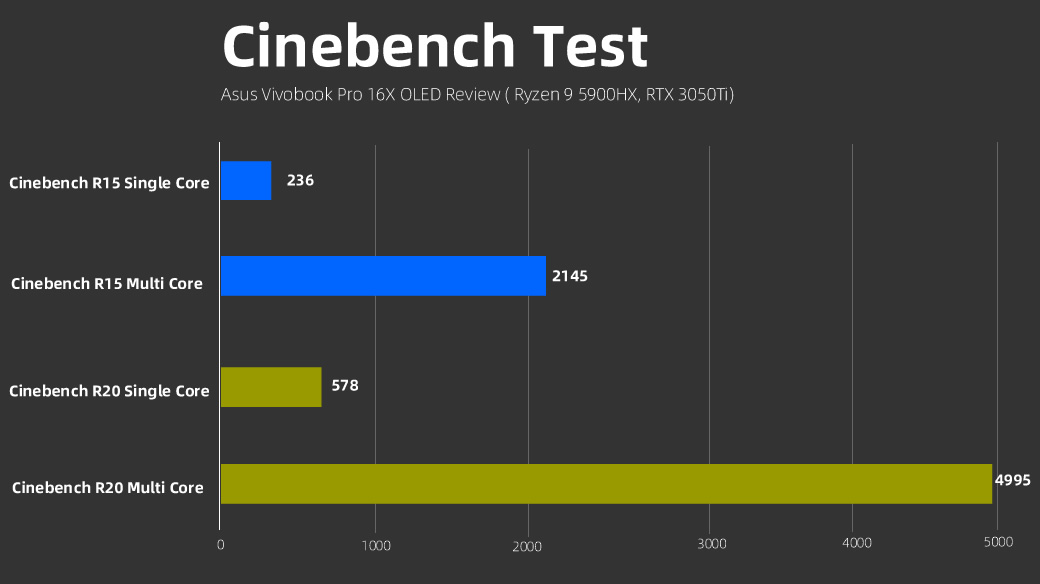
GPU Testing
The model we’ve chosen for our Vivobook Pro 16X OLED review is equipped with the RTX 3050 Ti Mobile GPU, a powerful dedicated GPU that allows the laptop to support high-end gaming as well. In the lower models, the GPU model is different. The GPU has 4GB of GDDR5 memory. It is based on an 8nm manufacturing process and uses NVIDIA’s Ampere architecture.
Some of the benchmark tests of this GPU are the following:
3DMark Time Spy: 4699 GPU Score, 9296 CPU Score, and 5086 Total Score
3DMark Fire Strike: 11344 GPU Score, 23310 CPU Score, and 10695 Total Score
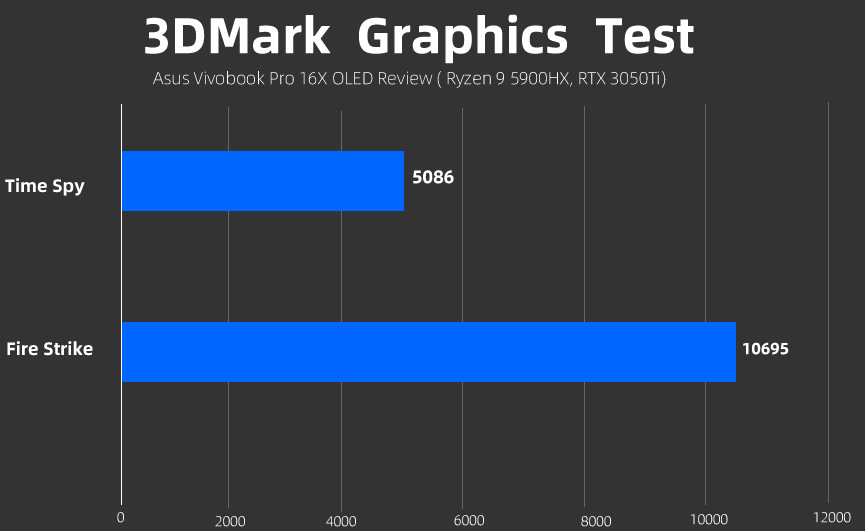
It is worth mentioning that all these benchmarks (CPU and GPU) were done under the following conditions: room temperature: 26-27°C, NVIDIA Studio Graphics Driver: 471.68 (30.0.14.7168), Operating System: Microsoft Windows 10 Home, Power Mode: Best Performance, Fan Mode: High Efficiency Mode (automatically adjusts fan speed according to situation).
ASUS Vivobook Pro 16X OLED: Stress Test
After completing the benchmarks, we also performed a stress test on the CPU and GPU. The conditions were the same as above.
CPU Stress Test: We used AIDA64 Stress Test mode to stress test the CPU, which lasted 20 minutes and reached a maximum temperature of 86°C. Overall, the power consumption is 54W. The test lasted 20 minutes, the CPU reached a maximum temperature of 86°C, and the power consumption reached 54 W. Overall, the CPU’s performance was strong, but heat dissipation could also be improved.
CPU+GPU Stress Test: The entire test lasted 26 minutes, with the GPU temperature rising to 65°C and a maximum power consumption of 50W. Whereas, the temperature of the CPU is 80°C and the power consumption is 35W. The power consumption of the entire laptop is slightly more than 80W.
ASUS Vivobook Pro 16X OLED: Gaming Performance
With the robust specifications of the Vivobook Pro 16X OLED, it can easily handle big games on smooth settings. To check this, we also did a gaming test on different games, which are the following:
PUBG PC: The average FPS was around 131 (fps) on smooth settings in this game. Furthermore, no lag was observed while running, crawling, or switching firearms.
Overwatch: In this game, the FPS was stabilized around 72. Even in the multiplayer melee mode, no lag was observed.
Battlefield 5: The average frame rates were between 40 and 50 on smooth settings in this game.
Summarize:
The new ASUS Vivobook Pro 16X OLED quickly meets the needs of gamers and business professionals with powerful specifications and a premium ultra-thin design. It is also convenient to carry for daily commuting. The 16-inch 4K OLED display has excellent detail, a high color gamut, and a high refresh rate to help the laptop deliver a superior visual experience. It has a 4K OLED display, a Ryzen 9 5900HX CPU, RTX 3050 Ti GPU, 32GB of RAM, a 1TB SSD, and a price of $1,549, making the laptop worth buying.


